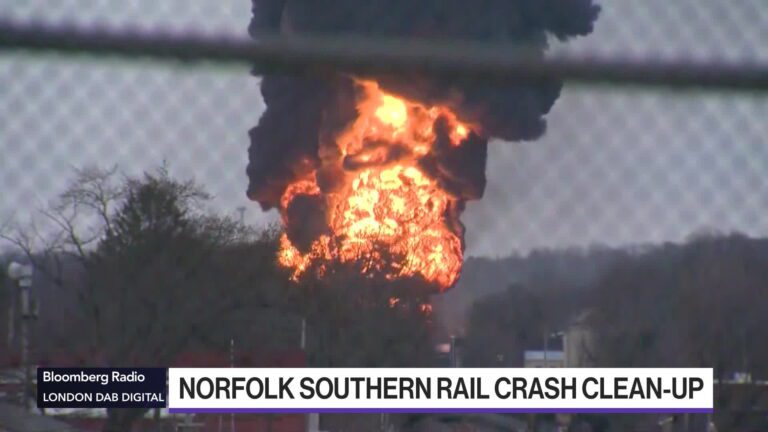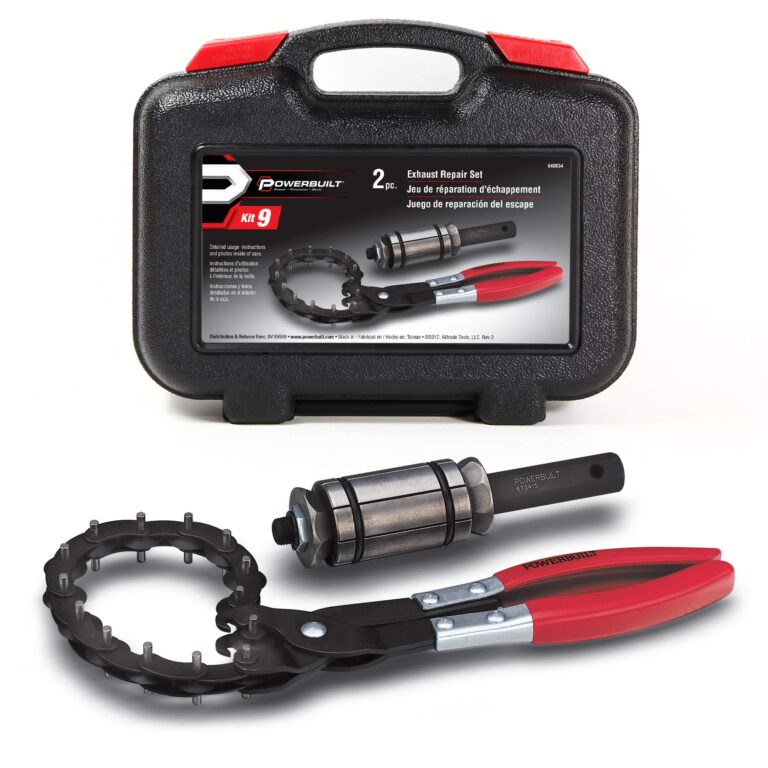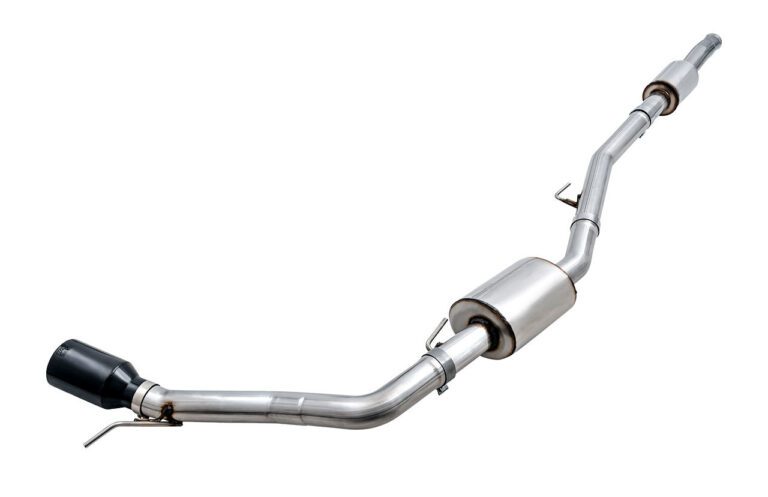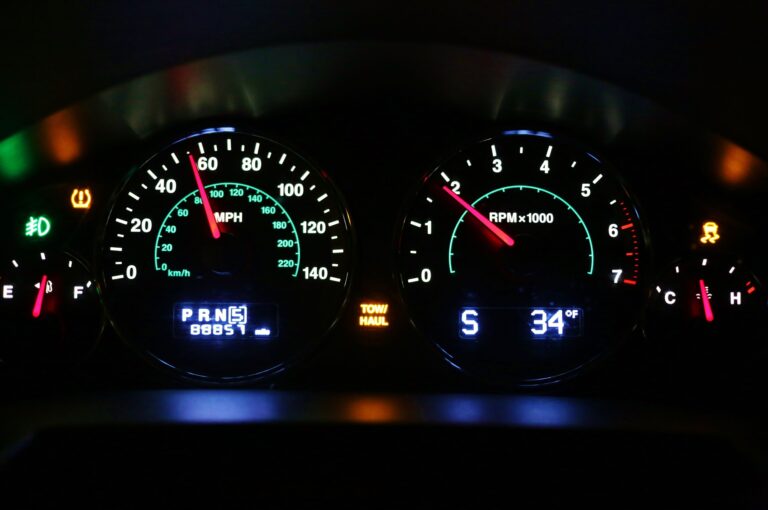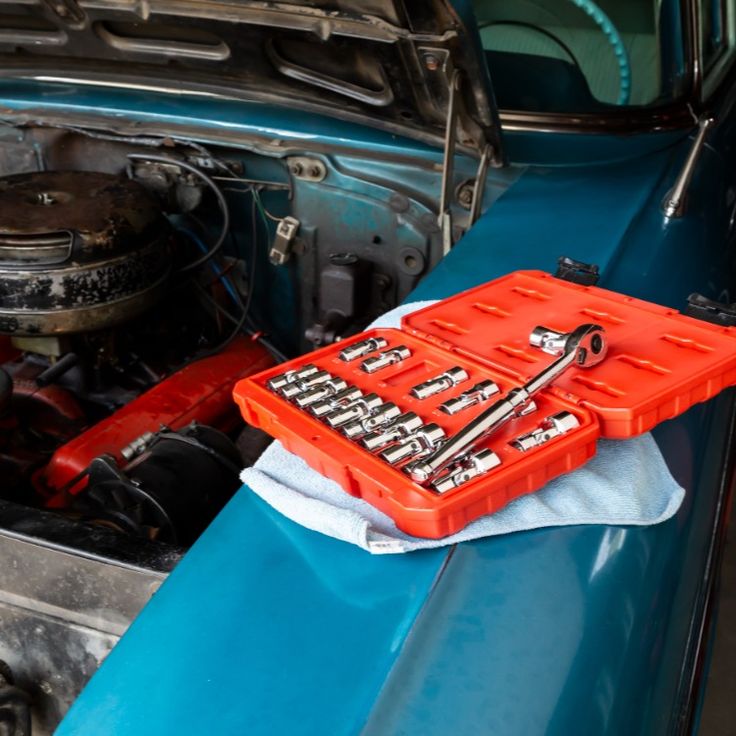What Happens If You Drive With a Bad Catalytic Converter : Unleashing the Consequences
Driving with a bad catalytic converter can result in decreased engine performance and increased emissions, potentially causing your vehicle to fail emissions tests and even damaging other parts of the exhaust system due to overheating. It is important to address any issues with your catalytic converter promptly to ensure the proper functioning of your vehicle and to meet environmental regulations.
Neglecting a bad catalytic converter can lead to costly repairs and harm the overall performance and efficiency of your vehicle.
Understanding The Role Of A Catalytic Converter
The catalytic converter plays a crucial role in reducing harmful emissions from vehicles, as required by regulations. It consists of a honeycomb-like structure coated with catalysts that facilitate chemical reactions. When exhaust gases pass through the converter, the catalysts convert toxic pollutants such as carbon monoxide, nitrogen oxides, and hydrocarbons into less harmful substances like carbon dioxide, water, and nitrogen. Driving with a bad catalytic converter can have various consequences. Firstly, it can lead to increased emissions, causing environmental pollution. It may also result in a decrease in engine performance and fuel efficiency. Furthermore, a malfunctioning converter can trigger the check engine light and potentially cause the vehicle to fail an emissions test. It is essential to maintain a properly functioning catalytic converter to ensure compliance with regulations, reduce air pollution, and optimize vehicle performance. Regular inspection and prompt replacement of a faulty converter can help prevent these issues and ensure a cleaner and more efficient driving experience.

Credit: www.npr.org
Recognizing Symptoms Of A Failing Catalytic Converter
htmlDriving with a bad catalytic converter can lead to various problems affecting your vehicle’s performance. Here are some common symptoms to look out for:
Decreased Engine Performance:
- Impaired acceleration and reduced power
- Hesitation and stumbling during acceleration
- Engine misfire
Unusual Exhaust Emissions:
- Excessive smoke from the tailpipe
- Unpleasant odor, such as a sulfur or rotten egg smell
- Increase in emissions output
Dashboard Warning Indicators:
- Illuminated “Check Engine” light
- Onboard diagnostics system (OBD) trouble codes related to the catalytic converter
If you notice any of these symptoms, it is important to get your catalytic converter checked by a qualified mechanic. Driving with a faulty converter not only affects your vehicle’s performance but also contributes to increased emissions, potentially leading to environmental issues and failing an emissions test. Make sure to address the problem promptly to maintain your vehicle’s efficiency and minimize potential damage.
Effects Of Driving With A Bad Catalytic Converter
Effects of Driving with a Bad Catalytic Converter:
Increased air pollution: A faulty catalytic converter can significantly contribute to increased air pollution. This essential component of the vehicle’s exhaust system is responsible for converting harmful gases into less harmful substances before they are released into the atmosphere. When the catalytic converter is damaged or clogged, it fails to effectively reduce emissions, leading to higher levels of pollutants being released into the air.
Potential damage to other engine components: A bad catalytic converter can also have a detrimental impact on other engine components. The increased backpressure caused by a faulty converter can put excessive strain on the engine, leading to a decrease in performance and potential damage to components such as the oxygen sensors or muffler.
Legal implications: Driving with a bad catalytic converter can also have legal implications. In many jurisdictions, it is illegal to operate a vehicle with a malfunctioning or removed catalytic converter. Violating these laws can result in fines, penalties, and possibly even vehicle impoundment.
Diagnosing The Issue
Diagnosing the issue of a bad catalytic converter can be done using diagnostic tools. These tools help in determining if the converter is functioning properly or if it needs to be replaced. One such tool is an OBD-II scanner, which can read the diagnostic trouble codes (DTCs) stored in the vehicle’s computer system. These codes provide information about the specific issue with the catalytic converter.
Seeking professional help is recommended if you are unsure about how to use these diagnostic tools or interpret the codes. Automotive technicians have the expertise and experience to diagnose the problem accurately and recommend the appropriate solution. They can also carry out further tests to confirm the issue and provide guidance on the next steps to take.
Repairing Vs Replacing The Catalytic Converter
When your car’s catalytic converter goes bad, you’re faced with the decision of whether to repair it or replace it. There are several factors to consider before making your decision.
Cost comparison: One of the most important factors is cost. Repairing the catalytic converter may be a more affordable option, especially if the damage is minor. On the other hand, replacing the catalytic converter may be necessary if the damage is extensive or if it is an older model.
In addition to cost, you should also consider the age of your car and its overall condition. If your car is older and has other mechanical issues, it may be more cost-effective to replace the catalytic converter rather than investing in costly repairs that may only be a temporary solution.
Ultimately, the decision to repair or replace your car’s catalytic converter depends on the specific circumstances and the advice of a trusted mechanic. They can evaluate the damage, consider the cost and other factors, and guide you in making the best decision for your vehicle.
Choosing The Right Replacement Catalytic Converter
When it comes to driving with a bad catalytic converter, it is important to choose the right replacement. There are two main options to consider – OEM and aftermarket converters. OEM, or Original Equipment Manufacturer, converters are designed and produced by the vehicle manufacturer themselves. They are specifically made to meet the vehicle’s original specifications and ensure compatibility.
On the other hand, aftermarket converters are produced by third-party manufacturers. While they may be cheaper, they may not be as reliable or compatible with your vehicle’s specifications. It is crucial to select a replacement catalytic converter that matches your vehicle’s make, model, and year accurately to ensure proper functioning.
By opting for an OEM catalytic converter, you can have peace of mind knowing that you’re getting a product that is made to the highest standards and will meet the exact specifications of your vehicle. This ensures optimal performance and emission control, keeping your vehicle running smoothly and environmentally friendly.
Regular Vehicle Maintenance
Regular Vehicle Maintenance
Proper engine maintenance
Regular vehicle maintenance is crucial for the proper functioning of your car. One important aspect of maintaining your vehicle is proper engine maintenance. This includes regular inspection of exhaust system components, including the catalytic converter.
| Benefits of proper engine maintenance: |
|---|
| – Improved fuel efficiency |
| – Enhanced engine performance |
| – Prolonged engine lifespan |
The catalytic converter plays a vital role in reducing harmful emissions from your vehicle. However, a bad catalytic converter can lead to various issues. It can cause a decrease in fuel efficiency, reduced engine performance, and even engine damage if left unaddressed.
Regularly inspecting your exhaust system components, including the catalytic converter, can help identify any issues early on. If you notice any symptoms of a bad catalytic converter, such as a sulfur-like smell or decreased engine performance, it’s essential to have it inspected and replaced if necessary.
By staying proactive with proper engine maintenance, you can prevent further damage to your vehicle and ensure optimal performance on the road.
Proper Driving Habits
Proper driving habits are essential to maintaining a healthy catalytic converter. Aggressive driving, characterized by rapid acceleration, excessive speeding, and abrupt braking, can put unnecessary strain on the converter, leading to potential damage or premature failure. To avoid this, drive responsibly by adhering to speed limits, smoothly accelerating and decelerating, and maintaining a safe following distance.
Another crucial aspect is the quality of fuel you use. Using low-quality fuel can introduce harmful contaminants into the engine, including sulfur, lead, and other pollutants. These contaminants can eventually reach the catalytic converter and cause it to clog or malfunction. To protect your converter, choose high-quality fuel from reputable sources, ensuring it meets the recommended specifications for your vehicle.
Maintaining proper driving habits and using quality fuel not only protects your catalytic converter but also helps to improve fuel efficiency and reduce harmful emissions. By being mindful of these factors, you can extend the lifespan of your converter and contribute to a cleaner environment.
Frequently Asked Questions Of What Happens If You Drive With A Bad Catalytic Converter
Can A Bad Catalytic Converter Ruin Your Engine?
A bad catalytic converter can potentially ruin your engine by restricting exhaust flow and causing the engine to overheat.
Is It Ok To Drive With Bad Catalytic Converter?
Driving with a bad catalytic converter is not recommended. It can lead to decreased fuel efficiency, poor engine performance, and even damage to other components. It’s best to have it repaired or replaced to ensure proper functioning of your vehicle.
What Will Happen If I Don’t Fix My Catalytic Converter?
Ignoring the fix for your catalytic converter can result in reduced fuel efficiency, increased emissions, and potential damage to your engine. It is important to address any issues with your catalytic converter promptly to ensure optimal performance and comply with environmental regulations.
What Are 2 Symptoms Of A Failed Catalytic Converter?
Two symptoms of a failed catalytic converter may include decreased engine performance and increased emission levels.
Conclusion
To sum it up, driving with a faulty catalytic converter can have severe consequences for both your vehicle and the environment. Not only can it harm your engine’s performance, but it can also lead to an increase in harmful emissions.
Ignoring this issue may result in costly repairs down the line and potential damage to other components of your car. So, it’s crucial to address any catalytic converter problems promptly to ensure a smooth and eco-friendly ride.


